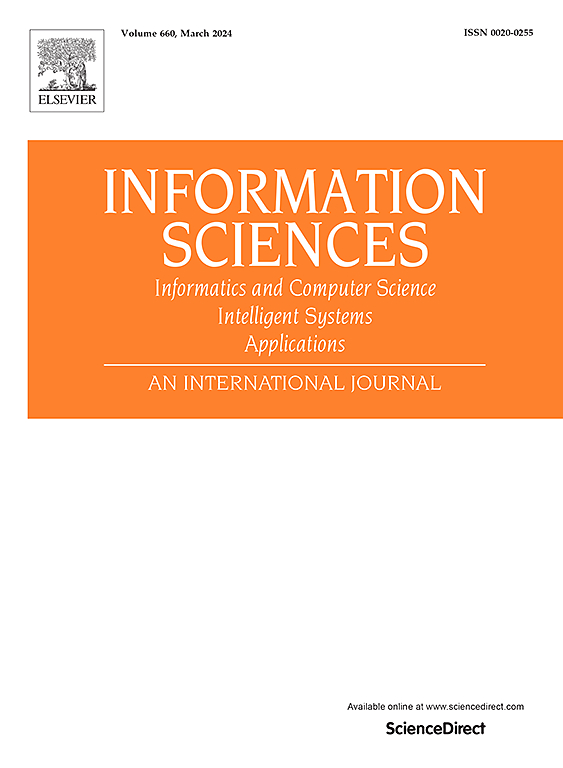Relaxed naïve Bayesian classifier based on maximum dependent attribute groups
IF 8.1
1区 计算机科学
0 COMPUTER SCIENCE, INFORMATION SYSTEMS
引用次数: 0
Abstract
The utilisation of effective dependent attribute groups (DAGs) can benefit the construction of a high-performance naïve Bayesian classifier (NBC), to alleviate the conditional independence assumption of naïve Bayes. An NBC with optimised DAGs retains the simple NBC structure and significantly enhances NBC generalisation performance. However, it is extremely difficult to determine the appropriate DAGs for a given dataset when training an NBC with good generalisation capability. Therefore, this study proposes a relaxed NBC (RNBC) based on the maximum DAGs (MDAGs), that relaxes the attribute independence assumption by constructing an NBC with a series of MDAGs generated from the original condition attribute set. To determine the MDAGs, the RNBC includes an effective objective function to determine the degree of membership of conditional attributes belonging to different DAGs. Unlike the regular computation of class-conditional probability in traditional NBCs with whole condition attributes, the RNBC calculates multiple class-conditional probabilities corresponding to non-overlapping MDAGs and their products are utilised to construct the classification system. Exhaustive experiments were conducted to systematically verify the feasibility, rationality, and effectiveness of RNBC. The results demonstrate that (1) the objective function used to determine the MDAGs is convergent, and that MDAGs can be obtained with low time consumption; (2) the RNBC with MDAGs achieves a lower classification risk than traditional NBCs with the independence assumption; and (3) the RNBC achieves statistically higher training/testing accuracy and probability estimation quality with lower classification risk compared with eight representative Bayesian classifiers spanning 22 benchmark datasets. The best average testing accuracy, probability mean square error, and area under the curve for the RNBC were 0.76, 0.35, and 0.85, respectively. These results systematically confirmed that the proposed RNBC is an efficient NBC variant with high structural stability, strong correlation expression, and good generalisability.
求助全文
约1分钟内获得全文
求助全文
来源期刊

Information Sciences
工程技术-计算机:信息系统
CiteScore
14.00
自引率
17.30%
发文量
1322
审稿时长
10.4 months
期刊介绍:
Informatics and Computer Science Intelligent Systems Applications is an esteemed international journal that focuses on publishing original and creative research findings in the field of information sciences. We also feature a limited number of timely tutorial and surveying contributions.
Our journal aims to cater to a diverse audience, including researchers, developers, managers, strategic planners, graduate students, and anyone interested in staying up-to-date with cutting-edge research in information science, knowledge engineering, and intelligent systems. While readers are expected to share a common interest in information science, they come from varying backgrounds such as engineering, mathematics, statistics, physics, computer science, cell biology, molecular biology, management science, cognitive science, neurobiology, behavioral sciences, and biochemistry.
 求助内容:
求助内容: 应助结果提醒方式:
应助结果提醒方式:


